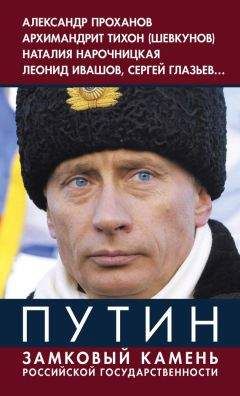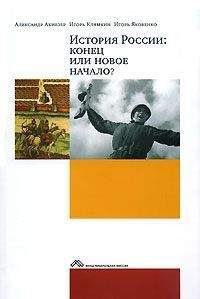Галина Кожевникова - Цена ненависти
225
Эта уязвимость проявилась во время президентской кампании в 1996 году, когда Ельцин (сам бывший аппаратчик КПСС) смог провести негативную кампанию против лидера КПРФ, построенную на отвержении советского прошлого России. См.: McFaul Michael. The 1996 Russian Presidential Elections: The End of Polarized Politics. Stanford, CA: Hoover Institution Press, 1997.
226
Первый и до сих пор лучший научный анализ идеологии НБП дан в: Mathyl Markis. ‘Die offenkundige Nisse und der rassenmäßige Feind:’ Die National-Bolschewistische Partei (NBP) als Beispiel für die Radikalisierung des russischen Nationalismus // Halbjahresschrift für südosteuropäische Geschichte, Literatur und Politik. Vol. 9. 1997. Nr 2; Vol. 10. 1998. Nr 1. См. также: Idem. Hammer und Sichel in der Fahne Hitlers // Jugendkulturen, Politik und Protest: Vom Widerstand zum Kommerz / Roland Roth and Dieter Rucht, eds. Opladen: Leske+Budrich, 2000. S. 211–237; Rogachevskii Andrei. The National Bolshevik Party (1993–2001): A Brief History. Доклад представлен на 33-й ежегодной конференции American Association for the Advancement of Slavic Studies, Arlington, Virginia, 15–18 ноября 2001 г.
227
Rogachevskii A. Biographical and Critical Study of Russian Writer Eduard Limonov // Studies in Slavic Language and Literature 20. Lewiston, z N.Y.: Edwin Mellen, 2004.
228
Matich Olga. The Moral Immoralist: Edward Limonov's Èto Ja — Èdička // Slavic and East European Journal. Vol. 30. 1986. N 4. Среди ранних активистов НБП также присутствовал «идеолог воинствующего гомосексуализма», журналист Ярослав Могутин». Цит. по: Прибыловский В. Русские националистические и праворадикальные организации. С. 177.
229
Цит. по: Lee M. The Beast Reawakens. R 313.
230
Umland A. Der russische Rechtsextremismus nach den Wahlen 2003–2004: Bestandsaufnahme und Perspektiven // Russlandanalysen. 2004. Nr 23 (http://www.forschungsstelle.uni-bremen.de/04_publikationen/0405_russlandanalysen/).
231
Это произошло со многими другими националистическими союзами, такими как Русский Национальный Собор, Фронт национального спасения или блок «Власть народу!».
232
Один из специалистов в области русского ультранационализма, В. Лихачев, пришел летом 2001 года к выводу, что «время национал-радикалов закончилось». См.: Лихачев В. Мы и наш диагноз: радикалы начинают и проигрывают // Общая газета. 2001. № 24.
233
Levy Richard. The Downfall of the Anti-Semitic Political Parties in Imperial Germany. New Haven, CT: Yale University Press, 1975.
234
Goldhagen Daniel. Hitler's Willing Executioners: Ordinary Germans and the Holocaust. N.Y.: Vintage Books, 1997. P. 75.
235
Katz Jacob. From Prejudice to Destruction: Antisemitism, 1700–1933 Cambridge, MA: Harvard University Press, 1980. P. 245–272.
236
Goldhagen D. Hitler's Willing Executioners. P. 76.
237
Kulka Otto. The Critique of Judaism in Modern European Thought: Genuine Factors and Demonic Perceptions // Demonizing the Other: Antisemitism, Racism and Xenophobia / Robert S. Wistrich, ed. Amsterdam: Harwood Academic Publishers, 1999. P. 204–205.
238
Goldhagen D. Hitler's Willing Executioners. P. 72.
239
Jochmann Werner. Structure and Functions of German Anti-Semitism, 1878–1914 // Hostages of Modernization: Studies on Modern Antisemitism, 1870–1933/39 / Herbert A. Strauss, ed. В.: Walter de Gruyter, 1993. P. 52–53.
240
Pulzer Peter. The Rise of Political Antisemitism in Germany and Austria. Cambridge, MA: Harvard University Press, 1988. P. 291, 282.
241
Goldhagen D. Hitler's Willing Executioners. P. 76.
242
Putnam R. Making Democracy Work.
243
Encarión Omar. Civil Society and the Consolidation of Democracy in Spain // Political Science Quarterly. Vol. 111. 2001. N 1.
244
Linz Juan, Stepan Alfred. Problems of Democratic Transition and Consolidation: Southern Europe, South America and Post-Communist Europe. Baltimore: The Johns Hopkins University Press, 1996. P. 87.
245
Przeworski Adam. Democracy and the Market. N.Y.: Cambridge University Press, 1991. P. 8.
246
Fritzsche Peter. Rehearsals of Fascism: Populism and Political Mobilization in Weimar Germany. N.Y: Oxford University Press, 1990.
247
Berman Sheri. Civil Society and the Collapse of the Weimar Republic // World Politics. Vol. 49. 1997. N 3.
248
Berman S. Civil Society and the Collapse of the Weimar Republic.
249
Eubank William, Weinberg Leonard. Terrorism and Democracy within One Country: The Case of Italy//Terrorism and Political Violence. Vol. 9. 1997. N 1.
250
Putnam R. Making Democracy Work.
251
Berman S. Civil Society and the Collapse of the Weimar Republic.
252
Eley Geoff. Reshaping the German Right: Radical Nationalism and Political Change after Bismarck. Ann Arbor: University of Michigan Press, 1994. P. XIX; цит. по: Berman S. Civil Society and the Collapse of the Weimar Republic.
253
When Parties Fail: Emerging Alternative Organizations / Kay Lawson and Peter H. Merkl, eds. Princeton, NJ: Princeton University Press, 1988.
254
Encarión O. Civil Society and the Consolidation of Democracy in Spain.
255
Payne Leigh. Uncivil Movements: The Armed Right Wing and Democracy in Latin America. Baltimore: Johns Hopkins University Press, 2000.
256
Pedahzur Ami, Weinberg Leonard. Modern European Democracies and Its Enemies: The Threat of the Extreme Right // Totalitarian Movements and Political Religions. Vol. 2. 2001. N 1.
257
Backes Uwe, Mudde Cas. Germany: Extremism without Successful Parties // Parliamentary Affairs. Vol. 53. 2000. N 3.
258
Kitschelt Herbert, in collaboration with McGann Anthony J. The Radical Right in Western Europe: A Comparative Analysis. Ann Arbor: University of Michigan Press, 1995.
259
Minkenberg Michael. Die neue radikale Rechte im Vergleich: USA, Frankreich, Deutschland. Opladen: Wfestdeutscher Verlag, 1998.
260
Умланд А. Сравнительный анализ крайне правых групп на Западе: По поводу книги М. Минкенберга // ПОЛИС/Политические исследования. 2001. № 3.
261
См. также: Minkenberg M. Neokonservatismus und Neue Rechte in den USA: Neuere konservative Gruppierungen und Strömungen im Kontext sozialen und kulturellen Wandels. Baden-Baden: Nomos, 1990; Idem. Die amerikanische konservative Revolution: Radikale Rechte und Republikanische Partei am Ende des Jahrhunderts // Aus Politik und Zeitgeschichte. Vol. 43. 1996. S. 45–53; Bellant Russ. Old Nazis, the New Right, and the Republican Party: Domestic Fascist Networks, and their Effect on U.S. Cold War Politics. Boston, MA: South End Press, 1991.
262
Pfahl-Traughber Armin. Konservative Revolution und Neue Rechte: Rechtsextremistische Intellektuelle gegen den demokratischen Verfassungsstaat. Opladen: Leske+Budrich, 1998.
263
Gessenharter Wolfgang. Kippt die Republik?: Die Neue Rechte und ihre Unterstützung durch Politik und Medien. München: Knaur, 1994; Leggewie Claus. Druck von rechts: Wohin treibt die Bundesrepublik? Miinchen: Beck, 1993; Lenk Kurt. Rechts, wo die Mitte ist. Baden-Baden: Nomos, 1994.
264
См. также: Wiesendahl Elmar. Verwirtschaftung und Verschleiss der Mitte: Zum Umgang des etablierten Politikbetriebs mit der rechtsextremistischen Herausforderung // Das Gewalt-Dilemma Wilhelm Heitmeyer, ed. Frankfurt a.M.: Suhrkamp, 1994. S. 115–137; Extremismus der Mitte: Vom rechten Verständnis deutscher Nation / Hans-Martin Lohmann, ed. Frankfurt a.M.: Fischer Taschenbuch Verlag, 1994.
265
Demirovic Alex. Kulturelle Hegemonie von rechts: Antonio Gramsci — gesehen von der ‘nouvelle droite’ // Die neue Gesellschaft: Frankfurter Hefte. Vol. 37. 1990. Nr 4; Pfahl-Traughber Armin. ‘Gramscismus von rechts’?: Zur Gramsci Rezeption der Neuen Rechten in Frankreich und Deutschland // Blick nach rechts. Nr 21.
266
Umland A. A German Le Pen? // Patterns of Prejudice. Vol. 35. 2001. N 4.
267
Schroeder Burkhard. Im Griff der rechten Szene: Ostdeutsche Städte in Angst. Reinbeck bei Hamburg: Rowohlt, 1997; Wagner Bernd. Rechtsextremismus und kulturelle Subversion in den neuen Ländern. В.:Zentrum Demokratische Kultur, 1998.
268
Griffin R. Net Gains and GUD Reactions: Patterns of Prejudice in a Neo-fascist Groupuscule // Patterns of Prejudice. Vol. 33. 1999. N 2; Idem. From Slime Mould to Rhizome: An Introduction to the Groupuscular Right. Oxford: Oxford Brookes University, 2002. Этот доклад был позднее опубликован в журнале Patterns of Prejudice. Vol. 36. 2002. N 3.
269
Blinkhorn Martin. Fascism and the Right in Europe, 1919–1945. Harlow: Pearson, 2000. P. 112.
270
НБП благосклонно отзывалась об интернациональной сети Европейского фронта освобождения, а позднее стала ее членом. См.: Прибыловский В. Русские националистические и праворадикальные организации. С. 186–187.
271
О концепции «уменьшенного подтипа» см.: Collier David, Mahoney James. Conceptual ‘Stretching’ Revisited: Adapting Categories in Comparative Analysis // American Political Science Review. Vol. 87 (December 1993); Collier David, Levitsky Steven. Democracy with Adjectives: Conceptual Innovation in Comparative Research // World Politics. Vol. 49 (April 1997).
272
Griffin R. From Slime Mould to Rhizome. P. 3.
273
Diamond L. Developing Democracy. P. 224.
274
Griffin R. From Slime Mould to Rhizome. P. 8.
275
Ibid. P. 2, 8–9.
276
Ibid. Р. 9.
277
Mathyl M. The National-Bolshevik Party and Arctogaia: Two Neo-fascist Groupuscules in the Post-Soviet Political Space // Patterns of Prejudice. Vol. 36. 2003. N 3.
278
Федеральный закон Российской Федерации от 20 декабря 2004 г. «О внесении изменений в Федеральный закон "О политических партиях"» (http://www.rg.ru/printable/2004/12/24/partii.html). Закон был принят и именно в таком виде вступил в силу — прим. ред.
279
Griffin R. Net Gains and GUD Reactions. P. 46.
280
Umland A. Zhirinovskii as a Fascist: Palingenetic Ultra-Nationalism in the Ideology of the Liberal-Democratic Party of Russia. Доклад представлен на 97-й ежегодном конгрессе Американской полититологической ассоциации, Сан-Франциско, 30 августа 2 сентября 2001 г.
281
Zimmerman William. The Russian People and Foreign Policy: Russian Elite and Mass Perspectives, 1993–2000. Princeton, NJ: Princeton University Press, 2002. Об антиамериканизме см.: Shlapentokh Vladimir. Russian Attitudes toward America: A Split between the Ruling Class and the Masses // World Affairs. Vol. 164. 2001. N 1; Gudkov Lev. ‘Ich hasse, also bin ich’: Zur Funktion der Amerika-Bilder und des Antiamerikanismus in Rußland // Osteuropa. Vol. 52. 2002. Nr 8.




